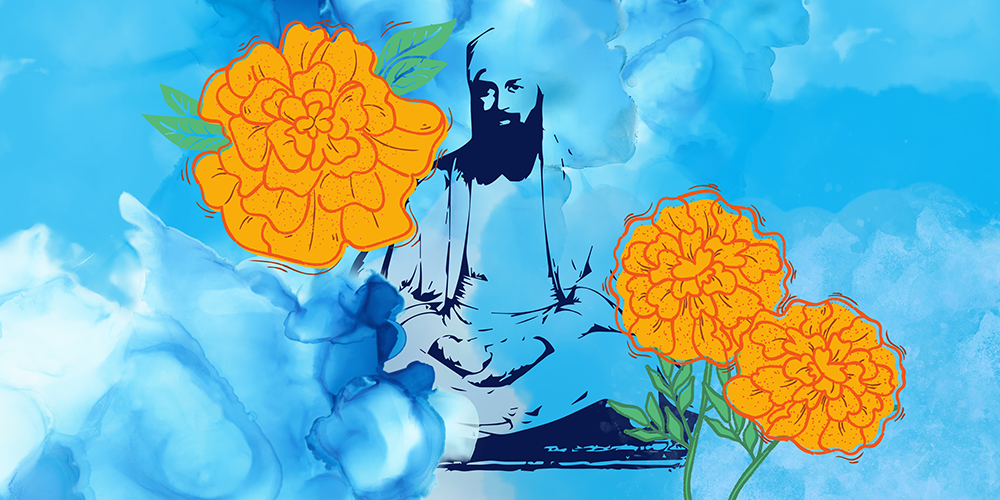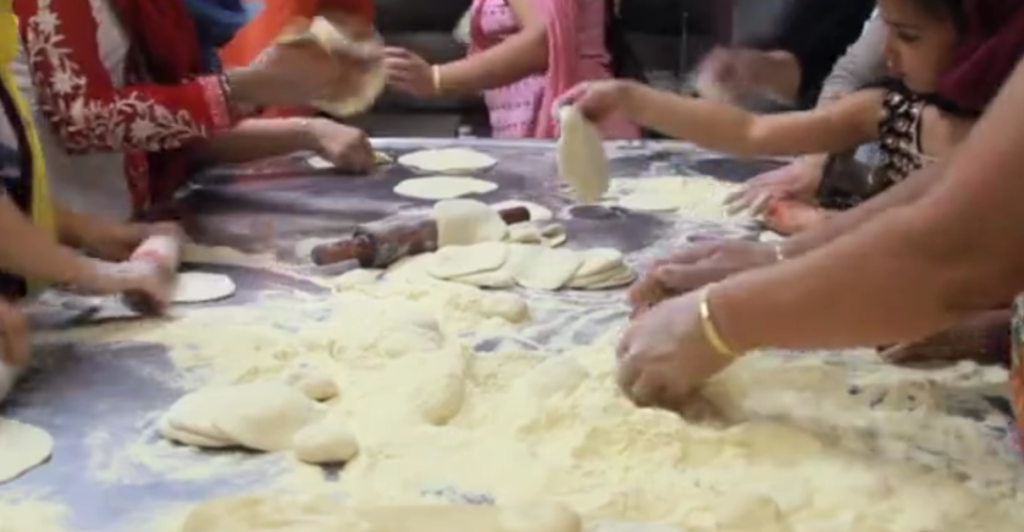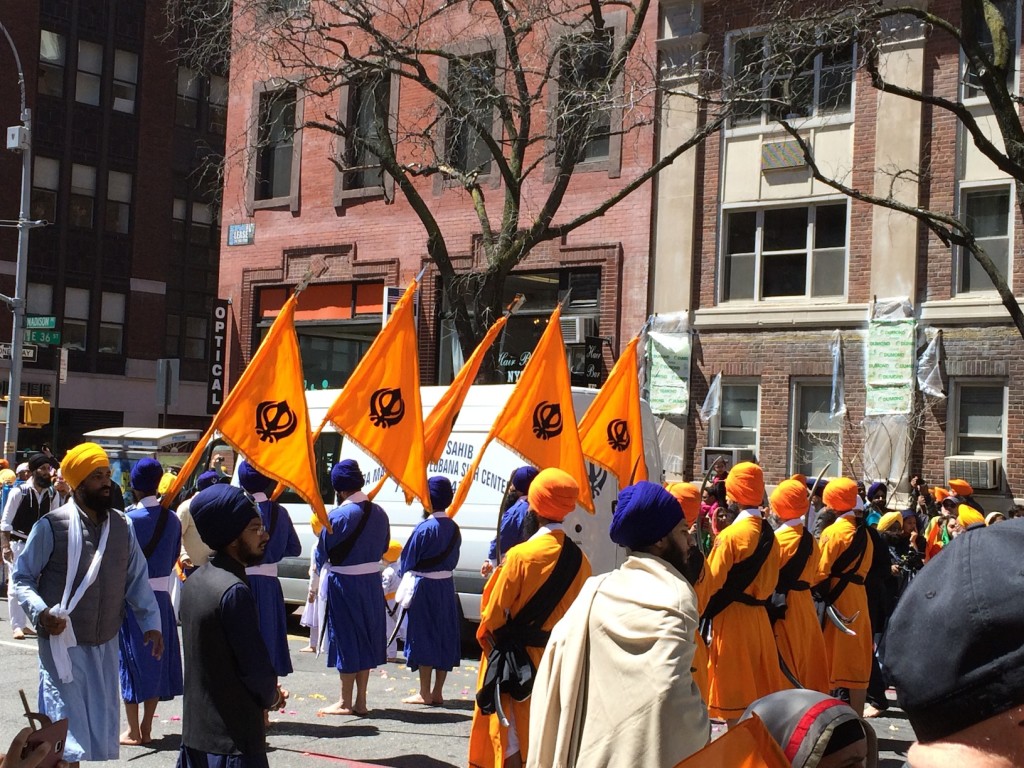Caste and religion intersect at a Woodside gurdwara

June 30, 2022
The story starts with a wedding. In 1987, Balbir Chand needed a place to get married. So Chand and his friend Komal Singh went around New York City until they found a gurdwara—also known as a temple where Sikh people worship—in Flushing that could host the wedding.
When the men in this gurdwara found out that Chand was from the Chamar community, however, they said he was not welcome.
“We don’t have a time, and we don’t have space over here to do that,” Chand recalls them saying.
Chand was livid. His community, the Chamar people, are part of the untouchable caste—a group often self-identified as Dalit, caste-oppressed, or by other regionally specific caste names like Chamar. The caste system is a hierarchy that deems some people polluted and others pure based on birth. For Chand and his community, this system not only affected their lives in South Asia, specifically Punjab, India, where they were from; it was now permeating their lives in the United States.
After this experience, Chand decided to forego trying other gurdwaras and to marry instead in Komal’s living room. He recalls that although it was a rainy day, his friend still took the furniture out of his living room and placed it in his backyard so they could perform the wedding ceremony.
But both Chand and Komal never forgot how they were not welcome in that gurdwara in Flushing. They needed a place where they could worship, one that would honor Chamar people and their main religious leader, Guru Ravidas. So, in 1987, they founded a temple and named it the Shri Guru Ravidas Sabha of New York.
Their first location was a basement they rented on Jamaica Avenue in Queens. Eventually, they moved to a larger second location in Richmond Hill before finally making their home base in Woodside, the third and current location.
“We started this temple because of discrimination,” said Chand.
Gurpal Singh, Komal Singh’s son who was there for the founding and beyond, recalls conversations he had with the elders in their community during the 1980s about how they were treated. “They [the elders] would talk about discrimination when it came to leadership in the other gurdwaras and how they felt ostracized in the Sikh religious circles,” he said. “They thought they would be more comfortable in their own institution.”
Gurpal believes the founding of the Shri Guru Ravidas temple was not only spiritual in nature but also political. “It was a political issue of being disenfranchised in terms of leadership— there are no other social institutions in the Punjabi community [in NYC], and the gurdwara is really one of the only places to be a leader in the community.”
□ □ □ □ □
This Shri Guru Ravidas temple is the only known Ravidassia temple—one where people follow Guru Ravidas—in New York City and the East Coast as a whole. It is one of only nine Ravidassia temples found in the United States.
On Sundays, you can hear the hum of temple music from Who’s Papi Tires, a half block away from the temple. Approaching the off-white building with large gray doors, temple-goers touch the stairs before going inside for service. They cover their hair and remove their shoes, then enter the large, carpeted sanctuary. They then make a financial offering, kneel, and take prashad, before sitting on the floor to worship.
On a hot spring Sunday in May during laangar, the meal offered to everyone on Sundays, I sit on the floor to eat roti and potato curry with Monika Singh, Balbir Chand’s daughter, who has attended all three locations of the Ravidassia Gurdwara since she was a few months old. Her father is also in the temple, sitting on the men’s side of the floor.
In an earlier phone call, Monika told me she had always known her caste identity and how for her it was synonymous with following Shri Guru Ravidas.
Guru Ravidas was an important religious and spiritual leader from present-day North India who is said to have been active in the fifteenth and sixteenth centuries. Born in Varanasi, he was a social reformer, poet, and a saint in the Sikh religion whose poetry appears in the Guru Granth Sahib, the sacred Sikh religious scripture. Guru Ravidas profoundly believed in Begumpura, an egalitarian society, and preached a message of caste equality that influenced many during his lifetime and well after. Guru Ravidas was born into the Chamar caste, to a cobbler family, one of the many reasons why caste-oppressed people are drawn to his teachings and have built a religious following around him. But because caste identity is such a contentious topic and intertwining caste with religion makes it even more so, caste-oppressed people who follow Guru Ravidas often face danger.
On May 24, 2009, six men attacked a Ravidassia temple in Vienna, Austria. Reports show that the men, who were non-Ravidassia Sikhs, barged into the temple with knives and a gun, killing one visiting Ravidassia leader and wounding more than a dozen people, including another well-known leader.
While many mainstream news outlets at the time lacked the proper caste analysis to explain the nuances of this crime, the root cause of this attack was not lost on the Ravidassia community, including the one in New York City.
This Vienna attack jolted Monika and showed her the sheer danger in what they were doing with their temple in New York City. “We were born and raised to know that we followed Guru Ravidas and that we were Dalits,” she said. “But when the Vienna incident happened, I started questioning: Why does it upset anyone else when Dalits arise?”
This incident was also personal to her family and New York City. Not only did the Ravidassia leaders who were visiting the temple in Vienna preach about Guru Ravidas, build hospitals and schools for Dalit people, and help build Ravidassia gurdwaras globally, they were the leaders who initiated her parents into the Ravidassia community in New York City.
“They [the attacked Ravidassia gurus in Vienna] would preach mainly to Dalit communities, and they would preach about Guru Ravidas and Dr. Ambedkar [a prominent Dalit rights leader from India],” Monika said. “There was so much advancement in Punjab for Dalits because of them, and that’s what bothered everyone and I think the reason they were attacked.”
For centuries, the caste system has haunted Dalit people. Although it is outlawed legally, caste discrimination thrives wherever South Asians exist. Caste-oppressed people are reprimanded and even killed for entering temples, eating in front of dominant caste people, and other crimes of merely existing. It also shows up in the United States, where caste-oppressed people face unfair labor practices and outright discrimination in workplaces, college campuses, and religious spaces. People justify this ill treatment because they believe that caste-oppressed people are destined to be at the bottom of society.
“There’s something about Indian culture that caste becomes your base identity, especially if there are enough of us,” Gurpal said. “The irony and tragedy of it is that caste is explicitly and outright rejected in Sikhism, but you can trace the caste-based gurdwaras on a timeline in New York City.”
□ □ □ □ □

On Sundays at the Shri Guru Ravidas temple, three religious leaders sit off to the right of the center of the sanctuary leading the Sunday prayers and playing three tablas for about sixty parishioners. The holy book sits to the left where temple-goers take turns fanning the Guru Granth Sahib with a chairu, a fan made specifically for this purpose. Near the three religious leaders, on the right wall of the sanctuary, a large portrait of Bhimrao Ramji Ambedkar, also known as Dr. B. R. Ambedkar, rests on the wall.
Dr. B. R. Ambedkar was a prolific Dalit civil rights leader, politician, philosopher, and social reformer who was the lead architect of the Indian constitution. He was India’s first law minister and spent his life and career uplifting the rights of caste-oppressed people through his books, his policies, and his leadership. He empowered generations of caste-oppressed people, who define themselves as Ambedkarite, to fight for their rights both in South Asia and the United States, ensuring that they follow his ideology of equality and empowerment.
He also has ties to New York City—he received his doctorate from Columbia University during the Harlem Renaissance and drew inspiration from the parallels between the civil rights struggle for Black communities in the United States and the struggles against untouchability in South Asia.
Many in the Shri Guru Ravidas temple see their Dalit identity as intertwined with their religious identity and want to show that, especially by paying their respects to Dr. Ambedkar.
“If it wasn’t for Ambedkar, we wouldn’t be where we are,” said Balbir Chand.
For Chand and others like him, including founder Komal Singh, this relationship between caste and Ravidassia religion is deeply connected. “We are not just Punjabi Sikhs; legally, there’s a founding document that was explicit about Dalit identity,” Gurpal, who is a lawyer, said. “Spiritually we have a different path and as far as cultural identity we have a distinction that we need to be aware of.”
But some folks aren’t sure about the distinction.
Conflict in any organization is a universal experience, usually expected when groups of people gather together regardless of caste, race, gender, sexuality, or religion. In this specific religious space, one of the main sources of tension is around displaying a picture of Dr. B. R. Ambedkar in the main worship hall. One faction says they are Punjabi Sikhs who happen to like Guru Ravidas and don’t need to promote Dalit-related issues, while the other side points to the founders’ desire to create a distinct institution based on caste and religion.
Rohit Singh, who started going to this gurdwara when he was six years old, strongly believes that Dr. Ambedkar’s photo does not belong in the space. “This temple is solely a religious place, not a political one,” he said. For Rohit, this is a place of worship, nothing tied to caste positionality. Although he is clear about his respect for Dr. Ambedkar, he believes that displaying his image is inappropriate because Dr. Ambedkar was not a Sikh religious leader.
When it comes to caste, Rohit disagrees with people who say caste exists in the United States. He said he was simply raised not to talk about it. “Caste did affect a lot of people back then [in the distant past], back home [in India], and maybe the older generation does feel like they’ve been mistreated, but here, I don’t see it,” he said.
Disagreements around caste identity and Dr. Ambedkar’s photo have led to intense clashes in the temple with an ongoing rift between different factions of belief. Nevertheless, Dr. Ambedkar’s photo remains on the wall in the sanctuary as well as the community library on the second floor of this gurdwara.
At the center of this issue is the question of caste identity in the United States—what does it look like for caste-oppressed people to have the autonomy to define themselves in whatever way they choose?
For the founders of this gurdwara, the reason for creating this space is evident—to gather where they feel ownership, belonging, and a strong sense of identity.
The second generation of people in the gurdwara, like Rohit, Monika, and Gurpal, have mixed emotions about the temple’s future. Rohit and his family have stopped attending the gurdwara altogether. For Gurpal, new and intentional leadership can transform the space into a leading intellectual, political, and cultural center for caste-oppressed people. For Monika, it is a place where she hopes to take her family to learn about both their religious and caste identity, both of which she is proud of.
“It’s not like it used to be after the conflict, but I’m never going to stop going,” Monika said. “It’s like a home that our parents, our elders made for us; we can freely do whatever we want, and no one can tell us we are not allowed to be here. I feel safe here, no one can tell me ‘You’re Dalit, get out!’ As for another gurdwara, you never know.”
Looking at everything that this gurdwara has been through, it is easy to forget that at the center is the remarkable story of a group of caste-oppressed people who immigrated to New York City and stamped their existence onto this city. This is not a story about conflict; this is a story about existence. No matter what disagreements happen within the halls of this holy space, sometimes battered, other times shaken, this gurdwara still stands.



